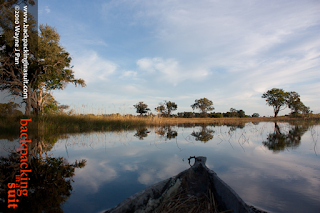I think the most striking thing about Uganda is how nice everyone seems to be. They are generally relaxed, smiling, and helpful. This doesn’t mean that Kampala doesn’t have its share of crime – you should still watch your back – but you it certainly is much safer and more accessible both day and night than many of the other major African cities (or so I’ve heard.) There is not too much to see in the way of tourist attractions, there is virtually no shopping, and things are not that cheap, but it is a nice place to whittle away a few laid-back days in between safaris or other more adventurous activities.
Things to See and Do
Old Taxi Park | I can be a jaded and grizzled veteran when it comes to unique sights in cities (people gush about Moroccan souks, but to me, they’re just markets with lots of alleys – been there done that!) so it surprises me when something impresses me. The Old Taxi Park in Kampala is unlike anything I’ve ever seen, and I’m pretty sure it’s unlike anything you’ve ever seen. Hundreds, maybe thousands of van taxis all in one place, with commerce throughout and surrounding it. This is one place you should definitely check out. Keep your valuables close, but then again, I never really felt threatened.
Raft the Nile | Apparently the Victoria Nile is one of the five best places to go rafting. I have no experience with it, but I can say that even with my fear of water, I had an absolute blast and didn’t really feel in danger at any point. Wide, deep, and warm, the Victoria Nile is the real deal when it comes to its rapids, but also a decent river to fall into when the going gets too rough. The site is a good hour and a half outside Kampala and your best bet is get a free transfer with a rafting company (check also for a free night of accommodation in Jinja from your rafting company if you don’t feel like rushing back to Kampala day of.) It’s not cheap – expect to pay between 95 to 125USD. The three best companies are Nile River Explorers, Adrift, and Nalubale.
The List
Kampala has a decent selection of different foods, with some of the best being Indian food. It doesn’t come terribly cheap, but it is tasty. Perhaps the most well regarded restaurant is Khana Khazana on Acacia Road in Kololo. Another good choice is Tandoori in Kisementi, also in Kololo, where you can order a spicy green pepper naan that is pretty unique.
If you’re more into sandwiches, then you’ll want to try Café Javas in Oasis Plaza next to Centenary Park. They’ve got great big sandwiches (try the chicken salad!) served with a generous heaping of chips for around 5-6 USD. Their sodas are also reasonably prices at 1000 Ugandan Shillings, or around 50 cents.
Need wi-fi? Go to Good African Coffee. The easiest location is probably at Lugogo Plaza on Jinja Road. The food here isn’t as good as it is in Javas, but the wi-fi is free, and they probably have the best coffee in all of Kampala.
World-wise Wisdom
Always check your bill. Ugandan restaurants can smell a newbie a mile away and will almost always try to rip you off somehow. Ten dollars for a bottle of water? “Oh, sorry, my mistake, it’s dark.” 9000 schillings in change becomes 900 schillings when it comes to your table? “Oops, they must have counted wrong, sorry.” Large and small beverages cost the exact same amount of money? “The computer only has one listing for that item, so they’re the same price.” Nothing is out-of-bounds. Just be vigilant, and feel free to stiff them on the tip – maybe then they’ll get the hint.
Taxis are the cheapest way to move around town. Short distances will cost 300 schillings, while most rides will cost 500 or 700, while long distances can cost 1000 or even 1500. Foreigners will almost always get overcharged, so feel free to bargain down one level – if they ask for 1000, tell them you’ll pay 700. If they ask for 500, give them 300.
During rush hour, avoid the traffic by taking a boda-boda (motorbike.) Look for someone who looks like they’ve been riding for a while, and then hang on for dear life. They cost more than a van taxi, but you’ll get there in a quarter of the time.






















































